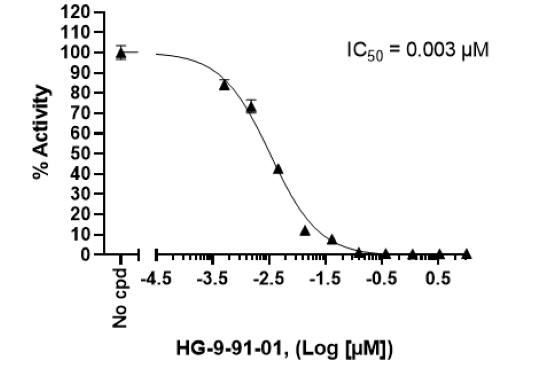Chemi-Verse™ SIK2 Kinase Assay Kit
The Chemi-Verse™ SIK2 Kinase Assay Kit is designed to measure SIK2 (salt inducible kinase 2) kinase activity for screening and profiling applications using ADP-Glo™ as a detection reagent. The assay kit comes in a convenient 96-well format, with enough purified recombinant SIK2 kinase, kinase substrate, ATP, and kinase assay buffer for 100 enzyme reactions.
- ADP-Glo™ Kinase Assay (Promega #V6930)
- DTT (Dithiothreitol), 1M, optional
- Microplate reader capable of reading luminescence
- Adjustable micropipettor and sterile tips
- 30°C incubator
SIK (salt-inducible kinases) are serine/threonine kinases of the AMPK (AMP-activated protein kinase) family. They are involved in gluconeogenesis and lipid metabolism inhibition. Dysfunction of SIK has been linked to cancer, due to its association with the TGFβ (transforming growth factor β)-Smad, AKT (protein kinase B), Hippo and NF-κB (nuclear factor kappa-light chain enhancer of activated B cells) pathways. The role of SIK proteins in cancer is complex, with some family members acting as oncogenes while others functioning as suppressors. SIK2 is widely expressed and is a potential oncogene in ovarian, prostate cancer, glioma and diffuse large B-cell lymphoma (DLBCL). It promotes cancer in multiple ways: inhibits cell apoptosis, promotes G1 to S cell phase, modulates glucose metabolism, inhibits autophagy and facilitates EMT (epithelial-mesenchymal transition). It accomplishes these roles by repressing AKT (protein kinase B) phosphorylation, activating PI3K (phosphoinositide 3 kinase) via p85α and linking to the PI3K/AKT/HIF1α pathway. The development of SIK inhibitors is the focus of intense research, but further studies are needed to identify isoform-specific inhibitors targeting SIK2 that can be used in cancer therapy.
Sun Z., et al., 2020, Signal Transduction and Targeted Therapy 5:150.


